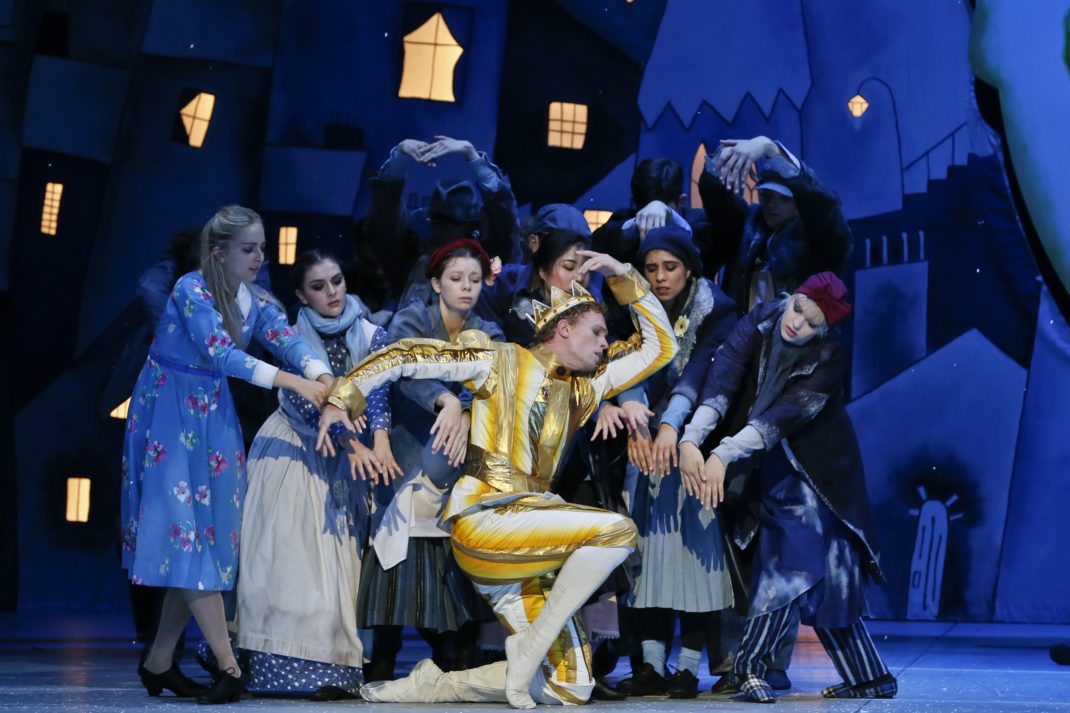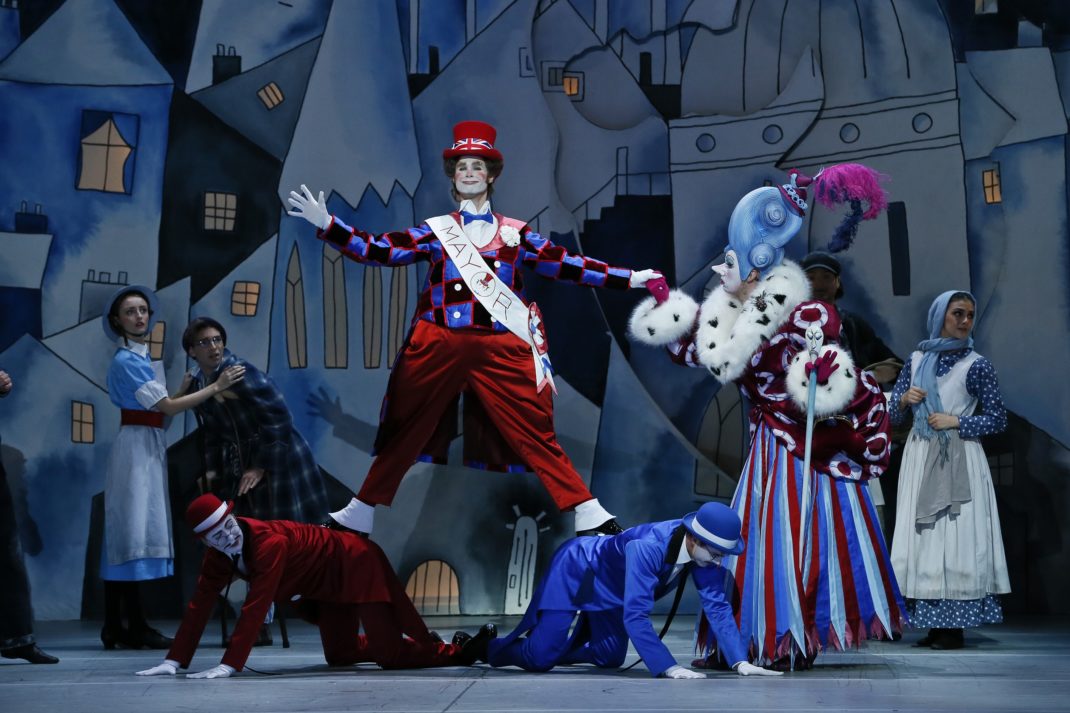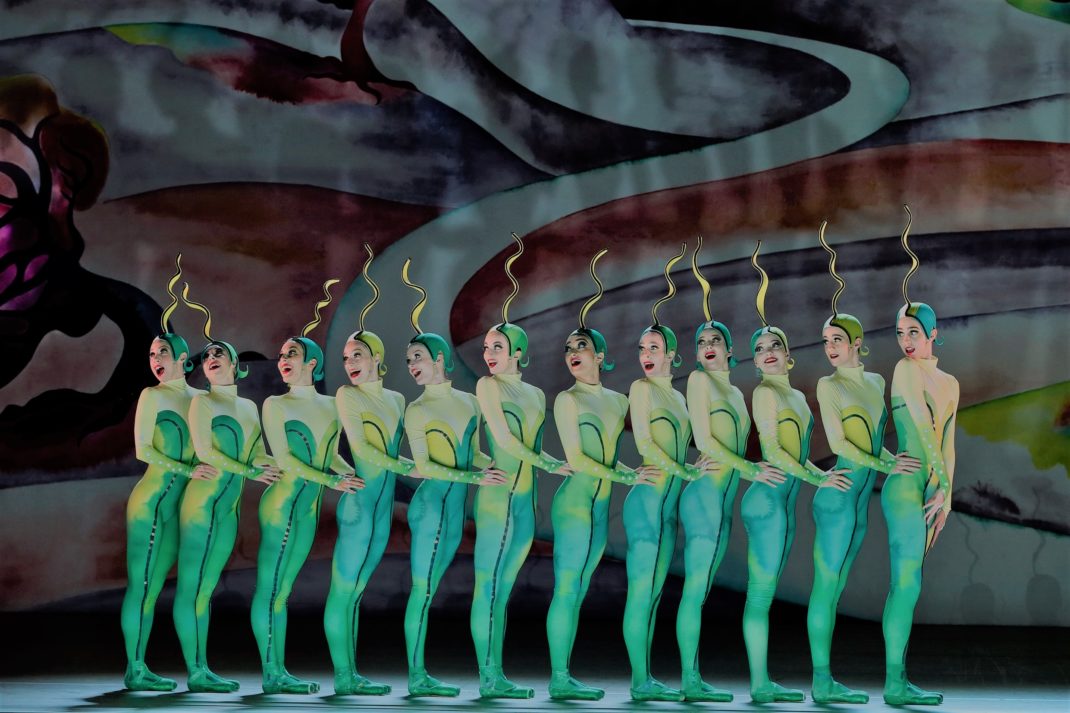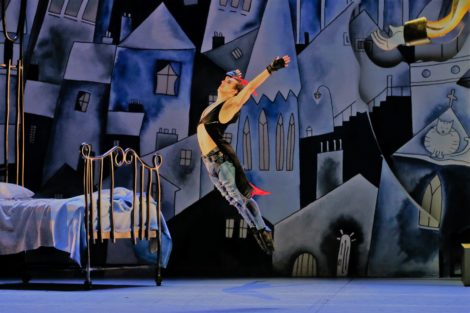25 February 2020. Lyric Theatre, Queensland Performing Arts Centre, Brisbane
Graeme Murphy has said that his latest creation, The Happy Prince, is basically for children. He wants, he says, ‘to cater for the tiny imagination bud inside children’s heads, which needs just the tiniest bit of imagination, of fertilisation, to burst into a million thoughts.’* I am looking forward to taking my grandchildren to see it. But, from the moment the work opens with an explosive sound and much white smoke—’the war is over’ says the program note—to the closing moments set on a sunny Australian beach, you don’t have to be a child for hundreds of thoughts to rush into your mind.
The narrative line is based on the Oscar Wilde story reimagined slightly by Murphy and Kim Carpenter. (Wilde’s version is readily available to read online.) In the ballet the Prince (Adam Bull) has been brought up to know only happiness. But, when a statue in his honour is erected in his home town, he comes to realise that not everyone lives in a world of happiness, and that there is much disparity between the rich and the poor. He engages with the Little Swallow (Marcus Morelli), who has not kept up with his migrating swallow family, and together they strip the statue of its rich decorations, which they give to the poor. The story ends sadly for both the Prince and the Swallow. But, as the ballet concludes, they are united in a different, heavenly world.

Instantly striking in the ballet are the visual aspects of the production. Sets and costumes by Carpenter, expressive lighting by Damien Cooper, and some fascinating projections by Fabian Astore created all kinds of resonances for me. Even though the production was meant to be set in post-war London, the township that was revealed as the smoke dissipated in the opening scene reminded me immediately of the architect Friedensreich Hundertwasser and his eccentric apartment buildings in Vienna and elsewhere with their assortment of shapes and colours. By the time we got to the end of the show, the sunny Australian beach scene recalled Charles Meere’s iconic painting Australian Beach Pattern, with the addition of a dominating reference in the background to Hokusai’s famous woodblock The Great Wave off Kanagawa. In between, how enchanting was the drop cloth in the scene where the Prince explained to the Little Swallow that happiness had pervaded his childhood. The cloth looked as if it had been borrowed from a kindergarten or a child care centre and was perfectly in tune with the box labelled ‘Toys’ in the downstage corner, from which emerged an assortment of toys who danced their way across the stage. Which brings up the question of the choreography.
Murphy has always been at home moving groups of dancers around the stage and this ability was an outstanding aspect of his Happy Prince choreography. The way he filled the stage with townspeople in the village in the opening scene, and the groupings he set up in the final beach scene were strong examples. Then there were the references to other theatrical genres. The characters of the Lord Mayor (Luke Marchant) and the Lady Mayoress (Jarryd Madden) came straight out of the pantomime tradition with the Lady Mayoress being the traditional Dame (always played by a man). Their extravagant costuming and outrageous movement also recalled this tradition.

Touches of vaudeville appeared in the scene where the Little Swallow engages with Rita Reed (Serena Graham) and her companion Reedettes. The choreography for this scene was appropriately in the Tivoli line-up mode.

Much of the production was filled with emotive and heartwarming moments. The characters who benefitted from the Prince’s generosity were finely drawn characters and beautifully portrayed: Corey Herbert as the Seamstress, Nathan Brook as the Artist and Benedicte Bemet as the Little Match Girl. They engaged our hearts and minds as their poverty was revealed prior to being helped by the Prince and the Swallow. And in true Murphy fashion, the Swallow was not always bird-like (although he did have moments of flying) but a teen guy with jeans ripped at the knees and occasionally a skateboard as a means of getting around.
A commissioned score from Christopher Gordon added to what was an exceptional collaboration.
I must admit, however, that I did find it hard to be convinced that the final beach scenes related to the migration to Australia of the so-called ‘£10 Poms’ (as I learnt later from the program notes). To me it was just Murphy in the same kind of mode as I thought was clear in his Romeo and Juliet where the story moved from place to place, era to era. I remember calling his R & J postmodern (to the annoyance of some) because it made reference to many aspects of many things. The Happy Prince was a bit the same.
I look forward to seeing this production again when I am sure I will notice other things, more of the choreography perhaps, and probably change my mind on some issues. But my first impressions are that The Happy Prince is exciting, surprising and heart warming theatre in which the whole is so much more than the sum of its enticing parts.
Michelle Potter, 27 February 2020
Featured image: Marcus Morelli as the Little Swallow in The Happy Prince. The Australian Ballet, 2020. Photo: © Jeff Busby

* Graeme Murphy quoted in ‘Darling Buds’ in program notes for The Happy Prince.
